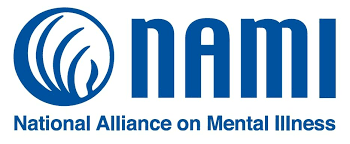Introduction
In 2022, COVID-19 restrictions eased and Americans were able to return to familiar routines at work, at school and in their communities. Many people found their lives returning to a new kind of normal, but at the same time, more Americans than ever reported struggling with their mental health. The impact of the COVID-19 pandemic on mental health cannot be underestimated. During the height of the pandemic, people already living with a mental health condition saw their symptoms worsen, and many other people experienced mental health symptoms for the first time. These patterns continued into 2022, and state policymakers worked to address worsening mental health in their communities.
Data from this time makes it clear that, rather than subsiding or improving, the nation’s mental health crisis has only intensified as pandemic-related isolation ended. Around 3 in 10 adults reported symptoms of anxiety or depression in February 2022, compared to a rate of 1 in 10 in January 2019. Recent Centers for Disease Control and Prevention (CDC) data on suicide showed that suicide rates increased in 2021 following a two-year decline. Youth mental health has remained a concern, especially for girls. As of fall 2022, average weekly emergency department (ED) visits among adolescent girls remained at or above pre-pandemic levels for mental health conditions overall, suicidal behaviors and drug overdoses.
2022 also marked an important milestone in mental health with the launch of the 988 Suicide and Crisis Lifeline. As of July 16, 2022, anyone can call, text or chat 988 — an easy-to-remember number that individuals can reach out to if they or someone they know is experiencing a mental health, substance use or suicide crisis. 988 has made it easier for Americans to reach out for help, and the increased call volume that 988 has experienced further underlines the need for more mental health resources.
Responding to the ever-growing mental health crisis, state lawmakers passed critical legislation in 2022 to build and reform mental health care systems. While the gap between the need for mental health care and its availability remains significant, policymakers are facing increasing pressure to ensure that their constituents can access mental health care when and where they need it. In fact, a 2022 public opinion poll from NAMI, conducted by Ipsos, showed that more than 8 in 10 people agree that elected officials need to do more to improve mental health care and treatment.
People Get Help Early
When mental health conditions are treated early, it can save lives and vastly improve outcomes for individuals. Unfortunately, we know that people experiencing mental health challenges often struggle for years before getting treatment or a diagnosis, often only receiving help once they are in crisis. In the U.S., there are many opportunities to learn about, screen for and intervene early with physical health conditions; the same must be done with mental health conditions.
In order for people to get help early, it is critical to increase the public’s awareness and understanding of mental health conditions. Normalizing mental health screenings in health care systems is another important step for early identification. Additionally, youth are experiencing a well-documented mental health crisis, and policymakers can act to ensure they have access to mental health services and supports at school, at home and in the community. While special attention should be paid to youth, as many mental health conditions first start to appear in adolescence and young adulthood, it is important to remember that a mental health condition can present at any age. NAMI believes that all individuals — from childhood through adulthood — should have access to care at the earliest signs of a mental health condition. In this section, we review key trends in legislation in two areas of focus:
- Early Intervention
- Child and Adolescent Mental Health
What does early intervention look like?
Early intervention refers to the identification and treatment of the signs of mental health conditions or suicidal ideation before they progress or worsen. While early intervention often happens on an individual level, public policies can impact early intervention access. Strategies can include but are not limited to:
- Promoting mental health awareness and suicide prevention campaigns
- Enhancing mental health and substance use disorder screening opportunities
- Making mental health care more accessible for children and youth (see the Child and Adolescent Mental Health section on page 12 for additional legislation)

